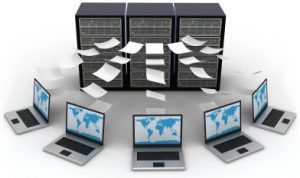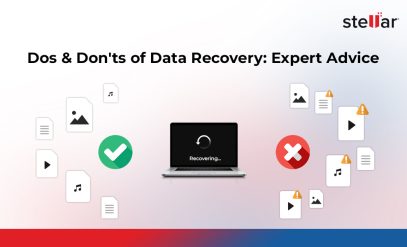Difference between NAS and SAN and their storage architectures
NAS and SAN both provide network storage for business and choosing one over the other isn’t as simple as it seems. NAS vs SAN is a discussion that comes up a lot and often baffles users. Along these lines, the blog explains the difference between NAS & SAN Storage.
NAS (Network Attached Storage) VS SAN (Storage Area Network)
Organizations require a reliable network storage system where
data can be stored and is readily available. Both NAS and SAN provides network storage solutions for business. However, they may seem similar at first yet differ a lot.
can be stored and is readily available. Both NAS and SAN provides network storage solutions for business. However, they may seem similar at first yet differ a lot.
NAS (Network Attached Storage): NAS is file-level computer storage connected to a network that provides access to a centralised location. NAS storage device operates on data files.
SAN (Storage Area Network): SAN is a dedicated network that interconnects multiple users to access block-level data storage. SAN is a local network of multiple devices.
Factors which determine using either of the network storage solutions:
The major difference between NAS and SAN storage usage depends on:
- How they are connected to the system (connection established between the accessing system and storage device)
- Type of data that you want to store
- How communication is done with the device i.e. cabling used to connect the system (Fibre Channel, Ethernet, etc.)
- Usage pattern
- Scaling concerns
- Budget
- How input/output requests are conducted i.e. SCSI, CIFS, NFS, etc.
Difference between NAS and SAN Storage
| NAS (Network Attached Storage ) | SAN (Storage Area Network) | |
| Definition | NAS storage is based on Transmission Control Protocol/Internet Protocol (TCP/IP) and uses the file system | SAN uses a Fibre Channel (FC), which is a high-speed network of storage devices connected with servers. |
| Data Access | File-level | Block level |
| Connection | Implements NFS, HTTP, and CISF protocol to share files | Fibre Channel or server class SCSI |
| Identification of Data | Data is identified by file name; byte offsets transfer meta-data or file data | Data is identified by disk block number, transfers raw disk blocks |
| Information Sharing | Offers greater sharing of information | It is operating system dependent |
| File Management | By NAS head | Server manages the File System |
| Backups | Backup and mirror are done on files which save bandwidth and time | Performs disk-to-disk backups. It treats the storage array as a virtual tape library |
| Budget | Provides solid performance for organizations with smaller budget | It uses fibre channel and fast data transfer; hence, SAN environment is pricy |
Typical Usage: NAS vs SAN
NAS:
- File serving
- File sharing
- Content archiving
- Metadata directories
- Peer-to-peer data sharing Data replication
SAN:
- For large database servers
- For clustering configuration
- Recovery archives
- Sharing of backup (libraries)
- Data replication
To sum up
The usage of NAS and SAN architecture depend on the requirements and system format. For instance, NAS is primarily used for long distance read/write operations, on the other hand, SAN is used for higher performance block level data storage. Furthermore, with the rapid advancement in data storage technology, there is a greater demand for flexibility, performance, and scalability which both the network storage systems are capable enough to deliver.








Hurrah, that’s what I was looking for, what a useful read!
thanks, admin of this site.
Thanks for finding it useful.
This is a useful article regarding this topic. In NAS, we can backup data from multiple computers. In SAS, we can interconnect multiple users. NAS is really very helpful for small industry.
I enjoy the article.